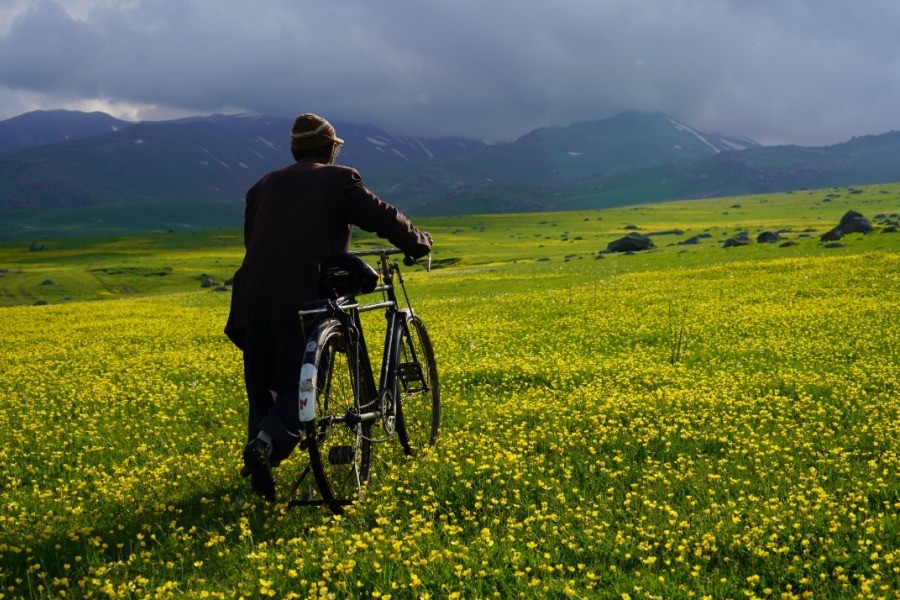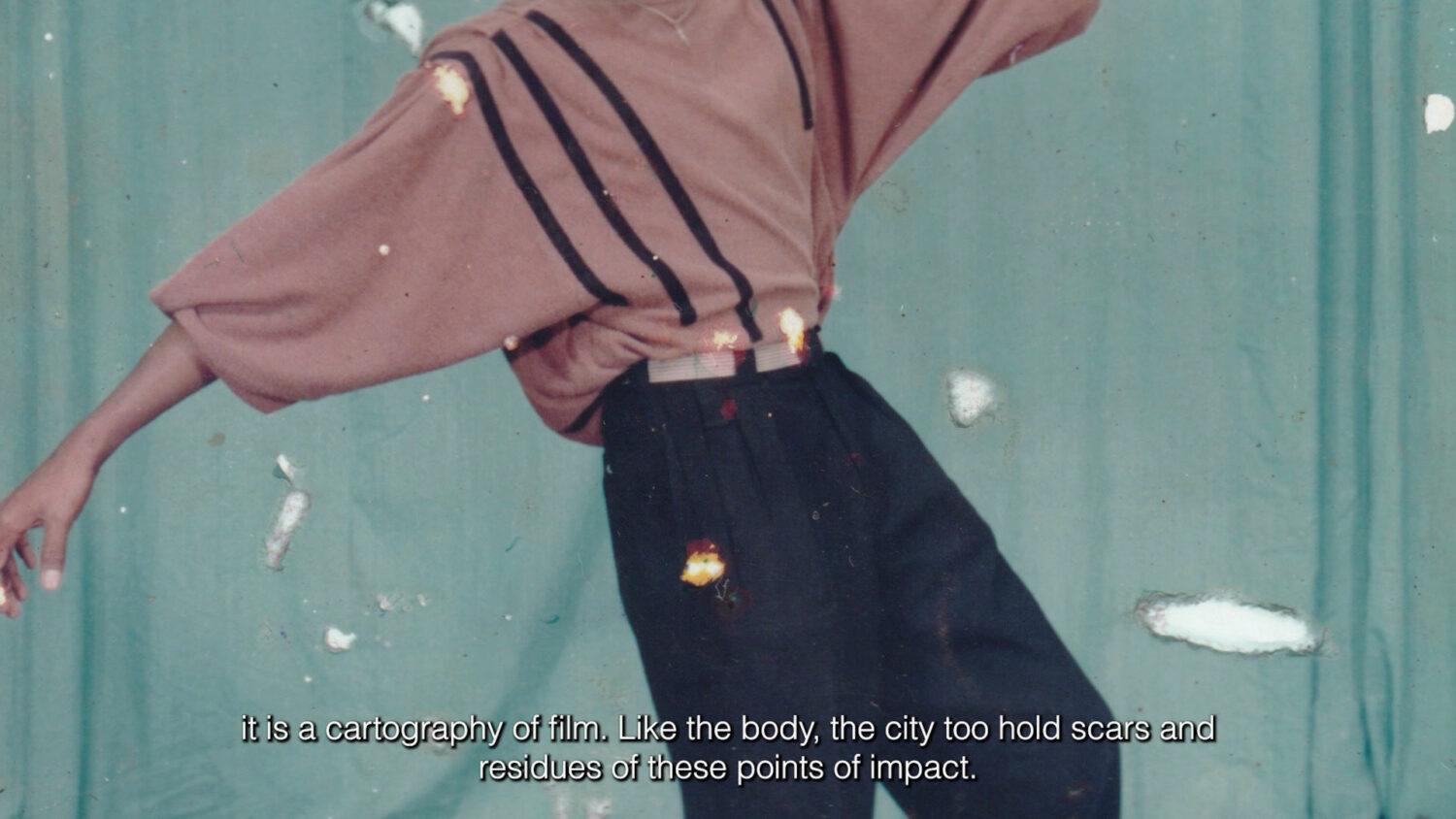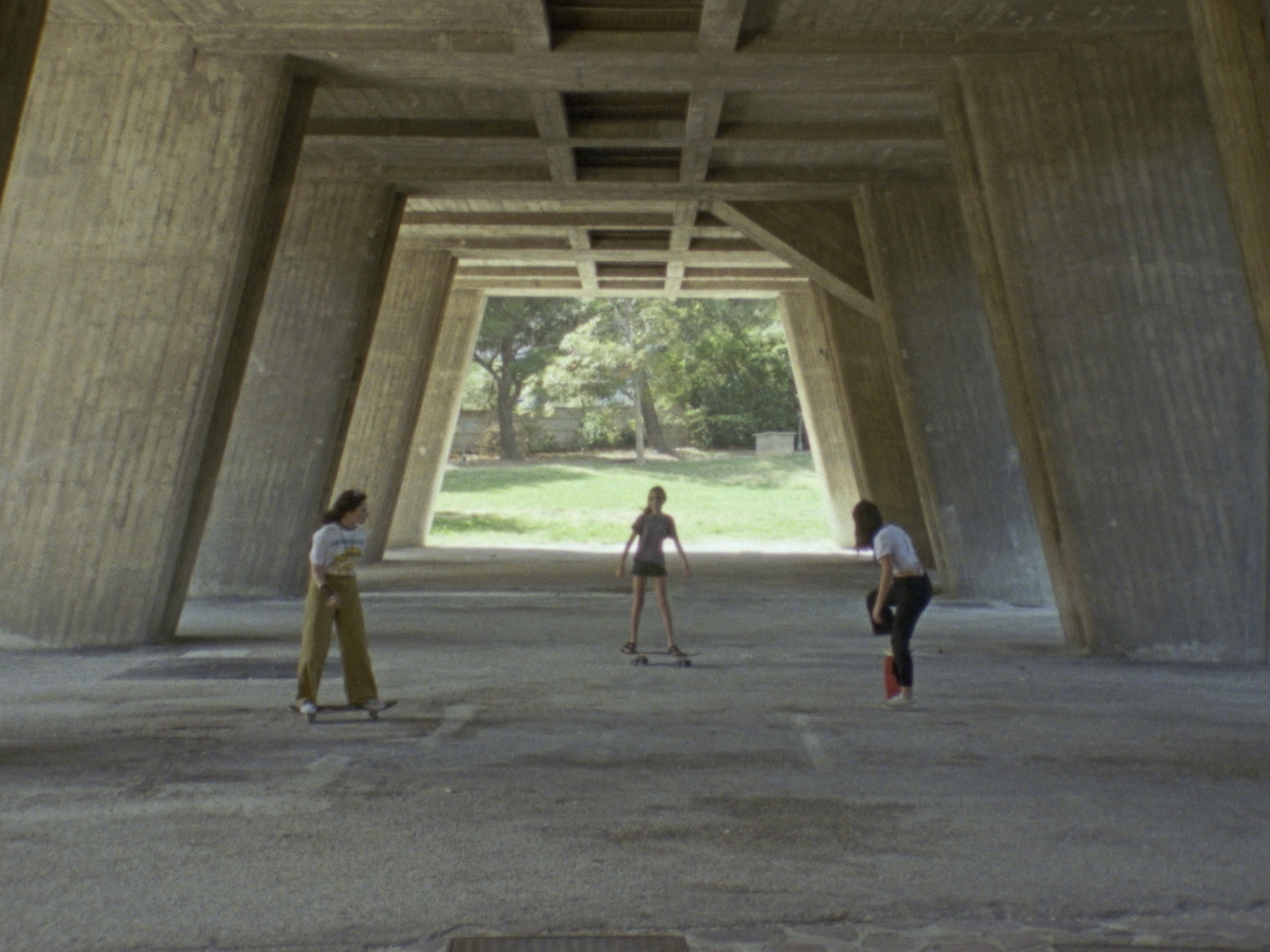How an Alpine Resort Town Came to Host One of the World’s Most Unique Film Festivals
By Stefano Rabolli PanseraTitled Meanwhile Histories, the third edition of the St. Moritz Art Film Festival (SMAFF) will take place in Switzerland’s Engadin valley from 12–15 September 2024. Under the Artistic Direction of Stefano Rabolli Pansera — Founding Director of Bangkok Kunsthalle and a former Director of Hauser & Wirth — with curatorial support from Roisin Tapponi, Leonardo Bigazzi, and Adam Szymczyk, 36 films will be shown this year. These include works by Jonas Mekas, Robert Cahen, Mark Bradford, Martine Syms, and Paul McCarthy, among others. Ahead of the festival’s launch, Rabolli Pansera pens an essay for Something Curated exploring the evolution of this one of a kind film event.

St. Moritz Art Film Festival was founded in 2020 to showcase the diversity and complexity of the contemporary production of moving image language, offering a curated selection of screenings, presentations and talks with leading figures of cinema, art and culture worldwide. From its outset, SMAFF was conceived as a laboratory for new ideas and a space of cultural debate and exchange more than a traditional festival.
In fact, its mission is to enhance the vocation of cinematographic language to explore emerging narratives and to activate perspectives on specific themes that just the moving image language can express. The festival also organises retrospectives and tributes to major figures of the art and cinema world as an opportunity to offer new readings and interpretations of mainstream movies. The festival takes place in the newly reopened Cinema Scala in the centre of St. Moritz, surrounded by the nature of the Engadin valley. The Engadin marks the hinge between the North and South of Europe: it is located at the centre of the continent, yet it feels detached from it, thus providing a critical distance to our timely issues.
Similarly to The Magic Mountain by Thomas Mann, the location of the festival is both geographic and conceptual: it locates the festival at the threshold of different genres and different disciplines, where different points of view collide and blur. For this reason, the festival invites artists and thinkers from across the world to celebrate different points of view and instigate different dialogues. As the name Art Film Festival highlights, the programme connects tradition and innovation as it lies at the intersection of arthouse cinema, video art and commercial cinematographic productions. Therefore, the scale of the festival remains intimate, but also invites a broader audience to attend and participate in the different offerings.

The festival’s unique landscape and surroundings invite a responsible and sustainable use of the valley’s resources and facilities. A cultural event with a significant territorial impact, the festival is a spatial happening: it is an event that attracts new audiences to the Engadin, and it extends the touristic season by operating as a catalyst.
The festival is curated as an exhibition of video art. A yearly curatorial theme is carefully chosen as the common thread of the programme of screenings, conversations, and collateral events during the year. The outcome is a coherent development of a strong annual theme, which triggers factual, philosophical and cultural debates leaving a strong impression on the audience.
The life of the festival unravels throughout the years with a coherent development of different themes that are related to each other and create a narrative. The first edition was entitled Face-to-Face and it was inspired by the re-appropriation of our face after the years of the pandemic, when faces were hidden behind masks. Through projections of video works and historic movies, the theme of face (and of portraiture) evolved into the direct confrontation of our face with the “other”: being face-to-face with nature, being face-to-face with history, being face-to-face with society, being face-to-face with technology, etc.

The film by Yuri Ancarani, Atlantide, offered an interesting standpoint because the confrontation of the main character with the landscape of the Venice lagoon saw the progressive dissolving of individuality into the landscape. Hence, Becoming Landscape was explored during the second edition of the festival with writers, artists and filmmakers. The theme of “landscape” was as important as the theme of “transformation” and “becoming,” as demonstrated through the films of artists such as Leah Gordon and Theo Eshetu — where landscapes appear to be always entangled in social, cultural and historical categories.
The film Spiral Jetty by Robert Smithson offered an interesting point of view because the construction of the homonymous artwork was presented as the point of simultaneous coincidence of three independent temporalities: the astrological time, the geological time, and the human time. The landscape becomes a “time-scape.”
Therefore, the annual theme of the third year is Meanwhile Histories and it questions the notion of “time,” which is commonly associated with history, a linear succession of one event after another. But time is an overlapping of multiple experiences that occur simultaneously. There are always multiple sides to events and occurrences. However, the dominant historical perspective often cancels the multiplicity in favour of a linear understanding of events. What remains is always set by the main narrative, which can shape and control how history is remembered, what is neglected and silenced, and crucially, what history is passed to future generations.

To approach minor or forgotten histories, perhaps it would be helpful to think of alternative temporalities in terms of “meanwhile.” When we read the dominant history, we must think about what else was happening “meanwhile.” Meanwhile Histories challenges the dominant narratives that have shaped our understanding of history. By acknowledging the existence of parallel histories and alternative temporalities, we can uncover the stories and experiences that have been overlooked, neglected or silenced.
Screenings, talks and panel sessions are organised around the theme of conflicting temporalities, codified histories, personal accounts, marginalised archives, and neglected memories, providing a more comprehensive and accurate understanding of reality. It invites us to question who has been given the power to shape history and whose voices have been suppressed.
Furthermore, Meanwhile Histories encourages us to engage with a multiplicity of perspectives and imagine a more inclusive and equitable future: by recognising and amplifying the experiences of marginalised groups such as Black communities, women, LGBTQ+ individuals, and the environment, we can challenge the inequalities and injustices that persist in our society today.
With 1756 applications, 36 selected films for the official programme, 13 Swiss premieres, two world premieres and talks by world-renowned filmmakers and philosophers, the third edition of the St. Moritz Art Film Festival, which takes place from the 12th to the 15th of September 2024, reinforces its position as a radical voice in the cultural landscape of cinema and moving image and illuminates its role as a dynamic platform that not only celebrates artistic talent but also enriches cultural discourse by uniting experimental narratives with contemporary debates.
Feature image: Young-jun Tak 卓永俊, Love Your Clean Feet on Thursday, 2023, Still. © Young-jun Tak. Courtesy St. Moritz Art Film Festival